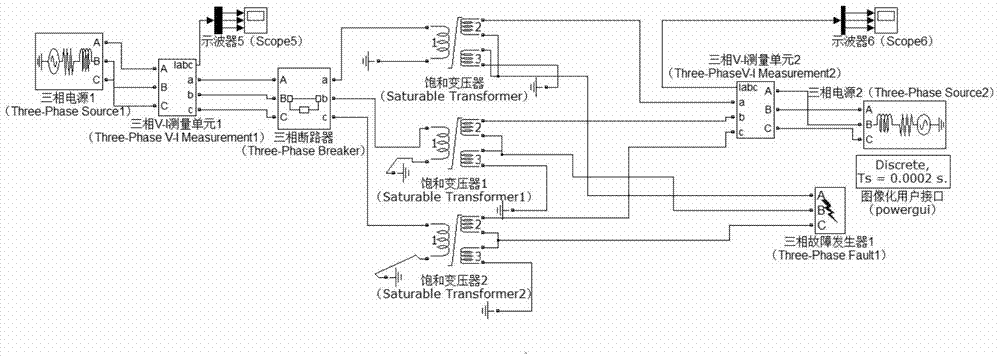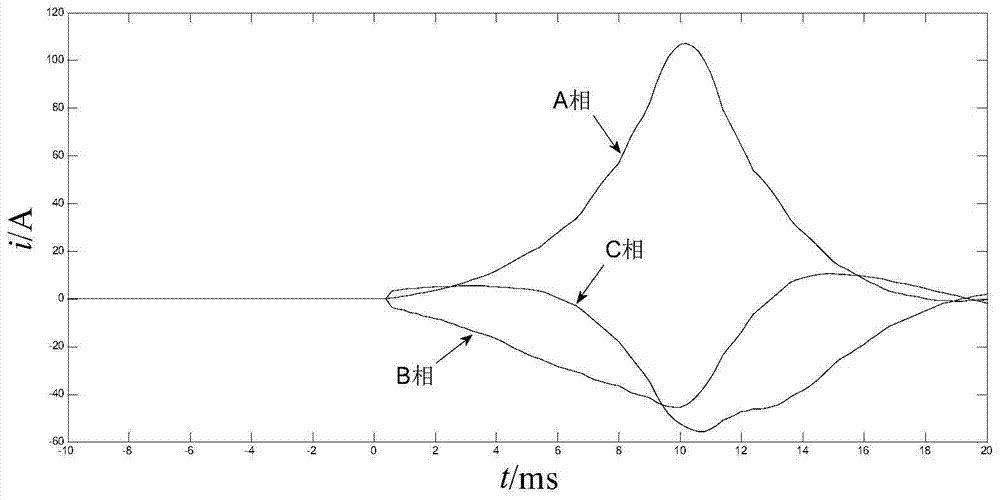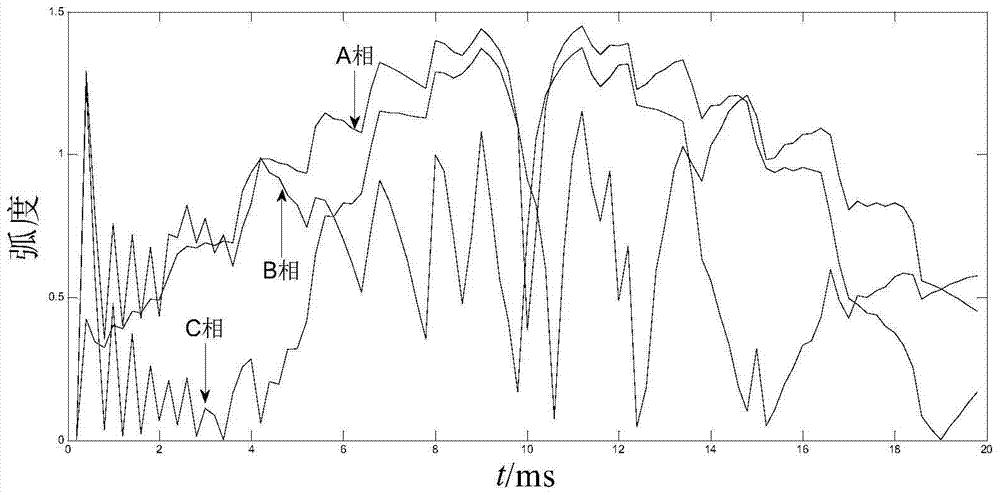A Transformer Inrush Current Identification Method Based on Differential Current Gradient Angle Approximate Entropy
A technology of excitation inrush current and differential current, applied in the direction of measuring electrical variables, instruments, measuring electricity, etc., which can solve the problems of lost signal distribution and inability to reflect the complexity of signal sequences.
- Summary
- Abstract
- Description
- Claims
- Application Information
AI Technical Summary
Problems solved by technology
Method used
Image
Examples
Embodiment 1
[0076] Example 1: Establish as figure 1 The transformer excitation inrush current simulation system model is shown, in which the transformers are three single-phase three-winding transformers, which adopt the Yd11 connection method, and connect its high-voltage windings to the 110kV system as the primary side of the transformer, and the medium-voltage windings and low-voltage windings are cascaded to form a transformer On the secondary side, the parameters of the equivalent double-winding transformer formed are as follows: the rated capacity is 250MVA, the rated transformation ratio is 110kV / 10.5kV, the equivalent resistance is 0.002pu, and the equivalent reactance is 0.08pu. Its magnetization parameters are shown in Table 1.
[0077] Table 1 Magnetization parameters of transformer core
[0078]
[0079] Now assume that the no-load closing fault occurs in the transformer at 0.5s, and the simulation time is set to 1s. The initial phase angle of the fault is 0°, the samplin...
Embodiment 2
[0085] Example 2: Establish as figure 1 The parameters of the transformer internal fault simulation system model shown are described in detail in Embodiment 1, and will not be repeated here.
[0086] Now assume that the single-phase ground fault of phase A occurs on the transformer in 0.5s, and the simulation time is set to 1s. The initial phase angle of the fault is 0°, the sampling rate is set to 5kHz, the transition resistance is set to 0.001Ω, and the grounding resistance is set to 1Ω. Under this model, the simulation results are as follows: Figure 4 As shown, the sequence of gradient angles required 20ms after the internal fault occurs is as Figure 5 shown.
[0087] Under this model, select the differential current data within the 20ms time window after the fault, calculate the differential current, first-order difference, gradient angle and standard deviation of each phase according to the sequence described in this patent, and use the approximate entropy algorithm t...
PUM
 Login to View More
Login to View More Abstract
Description
Claims
Application Information
 Login to View More
Login to View More - R&D
- Intellectual Property
- Life Sciences
- Materials
- Tech Scout
- Unparalleled Data Quality
- Higher Quality Content
- 60% Fewer Hallucinations
Browse by: Latest US Patents, China's latest patents, Technical Efficacy Thesaurus, Application Domain, Technology Topic, Popular Technical Reports.
© 2025 PatSnap. All rights reserved.Legal|Privacy policy|Modern Slavery Act Transparency Statement|Sitemap|About US| Contact US: help@patsnap.com



